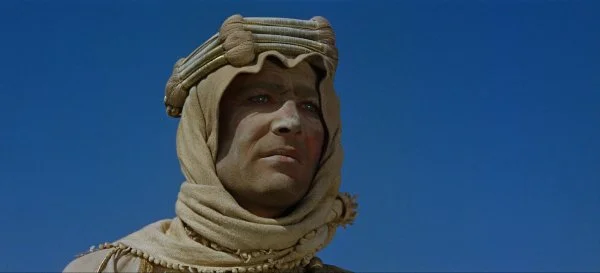A Message from Jon Delano,
Denis Theatre Foundation President
Dear Friends of the Denis,
Happy Thanksgiving to all!
I hope you are enjoying this Autumn season -- Autumn from a Latin word meaning season of harvest. At this time of year, we give thanks for that harvest and all that enriches our lives, despite the challenges of our times.
We at The Denis are especially thankful for YOU and all those that support our efforts to create a cultural arts center at The DenisTheatre. Your annual contributions have enabled us to sustain this building as we move to our next step.
This month, we are also giving thanks to two very generous anonymous donors! One couple surprised us with an incredible offer to underwrite a substantial amount of our monthly expenses with a donation every month. We are so very grateful for this recurring and very generous contribution. Another local couple has made a major contribution of over $40,000 which, along with monies set aside to secure our mortgage, allowed The DenisTheatre Foundation to pay off the mortgage on the building. This, too, relieves a large monthly expense, and we are thankful for this tremendous gift.
While The Denis still has an outstanding loan taken in the early days to finance the purchase (and thereby saving) the theatre, we have significantly strengthened our monthly financial position thanks to these donations.
Every donation counts, and we thank you for using the DONATE button below to help in whatever way you can. In short, we are making progress because of the generosity of many!
We give thanks to you for all your support. Have a wonderful Thanksgiving!
Yours,
Jon
UPCOMING EVENTS
BACH CHOIR OF PITTSBURGH: CIRQUE DU CINEMA
The Bach Choir performs Richard Einhorn’s majestic Voices of Light in accompaniment to Carl Theodor Dreyer’s 1928 silent film “The Passion of Joan of Arc” — at ROW HOUSE HOLLYWOOD THEATER in Dormont.
Showtimes:
SATURDAY, NOVEMBER 15 @ 7:30pm
SUNDAY, NOVEMBER 16 @ 4:00pm
TRICKS AND/OR TREATS MOVIE PICKS
For those of you that prefer treats and tricks instead of ghosts and ghouls, these post-Halloween picks should fill your now empty candy bag quite nicely. There's no reason to quit Halloween cold turkey. Just dial it back heading into Film Noirvember.
ELAINE’S PICKS
The Gift (Joel Edgerton, 2015)
Written and directed by Joel Edgerton, The Gift stars Jason Bateman in a non-comedic role. The twisty tale becomes creepier as the story progresses. Like Alfred Hitchcock's domestic thriller, Shadow of the Doubt (1943), Edgerton's film conveys a constant sense of underlying unease -- things are never quite what they seem to be.
Truly, Madly, Deeply (Anthony Minghella, 1990)
Alan Rickman is the benevolent ghost in Minghella's fantasy drama. When he returns to haunt his love, Nina (Juliet Stevenson) he becomes an obnoxious ghost (like bringing home strange spirit acquaintances) with an agenda. TMD features one of the all-time great crying scenes.
House of Games (David Mamet, 1987)
Mamet is the master of the big con. Margaret (Lindsay Crouse), a successful psychiatrist, tries to help her patient get out from under gambling debts. Big mistake. Tricks and very few treats make this a delight to watch and rewatch. The ending supports the wicked twists and turns and doesn't disappoint in subsequent viewings. If you like this one, also seek out Mamet's The Spanish Prisoner (1997).
Phoenix (Christian Petzold, 2014)
Christian Petzold is one of Germany’s most acclaimed filmmakers. The Phoenix in question refers to the mythological bird that can be reborn. Nelly (Nina Hoss) is a Holocaust survivor who has her face reconstructed and returns to her home to face her husband who may or may not have surrendered her to the Nazis. The influence of VERTIGO, FRANKENSTEIN, film noir and pulp fiction enliven this unique tale of betrayal, memory— and revenge.
JAY’S PICKS
The Gazebo (George Marshall, 1959)
Glenn Ford stars in this clever black comedy as a TV mystery writer blackmailed over nude photos of his actress wife (Debbie Reynolds) from many years ago. To extricate himself, he shoots the blackmailer and buries him under their new gazebo. While fending off contractors and real estate agents who might uncover his deed, Ford learns the real blackmailer has been killed elsewhere. So, who's buried under the gazebo?
The Prestige (Christopher Nolan, 2006)
Nolan's critical and commercial acclaim covers films like Memento, Oppenheimer, and Batman, but this -- one of his devious best -- concerns friends turned feuding magicians (Hugh Jackman and Christian Bale). After one perfects a remarkable illusion, the other becomes obsessed with discovering its secret. Co-stars Scarlett Johanssen, Michael Caine, and David Bowie (as Nicola Tesla).
The Last of Sheila (Herbert Ross, 1973)
Everyone loves an Agatha Christie-inspired whodunnit with a stacked cast of beloved actors including James Mason, Richard Benjamin, Dyan Cannon, James Coburn, Ian McShane, and Raquel Welch. Rian Johnson's Knives Out films have proven the genre maintains a cross-generational appeal. This one-week pleasure cruise and scavenger hunt turns deadly as guests conceal and uncover secrets and some wind up dead. Even if you discover the film's trick, it's still a treat.
The Orphanage (Juan Antonio Bayona, 2007)
Even though J.A. Bayona’s film sits firmly within the horror genre, it doesn’t resort to jump scares and the typical horror cliches to spook its audience. It’s a thinking person’s thriller that burrows under your skin and lingers. In many ways, it’s an old fashioned, gothic haunted house story dripping with atmosphere and racing towards its shocking (and heart wrenching) conclusion.
See more picks from Elaine and Jay at denistheatre.org/blog.
FILM SCHOOL: CHIAROSCURO - AN ABRIDGED PRIMER
The term chiaroscuro dates to the Renaissance, referring to drawings on colored paper using ink for dark lines and a water-medium paint with natural pigments for light. As artists further developed interplay between extreme light and dark, they used chiaroscuro to lend depth to portraiture and modeling. During the 16th century, Caravaggio became an early master of the technique, using chiaroscuro to create tenebrism, the violent, often morbid collision of light and darkness.
Saint Jerome Writing by Michelangelo Merisi da Caravaggio (1607 or 1608)
As tenebrism evolved, more detail was added to the darkness. Adam Elsheimer created night scenes lit by moonlight and firelight. Rembrandt van Rijn often painted scenes lit by a single candle. Directly inspired by the work of these 16th and 17th century artists, early 20th century photographers and filmmakers began to develop a lighting style characterized by high contrast lighting to create a violent contrast between the light and the dark contained within the same frame.
German expressionism began as a broad artistic movement, a response to the horrors of World War I, that made the internal emotion of its subjects external. Germany banned foreign films after the War, leading to an insular, experimental film community that was inspired by and spoke to the wounds of a disgraced nation. Silent filmmakers translated expressionism to film by using chiaroscuro, physical distortions of the set, high contrast lighting, and unnatural performances to convey characters’ emotions or create symbolic chasms without the need for intertitles.
The two most famous films to emerge from the movement were Robert Wiene’s The Cabinet of Dr. Caligari (1920) and Fritz Lang’s Metropolis (1927).
Conrad Veidt as Cesare, a somnambulist trained to commit murder by Dr. Caligari, in Robert Wiene’s The Cabinet of Dr. Caligari (1920).
Hollywood latched onto the striking visuals of the German expressionist movement – often importing the artists to help make their own horrific visions. Universal hired Metropolis cinematographer Karl Freund to shoot Dracula (1931) for Tod Browning and later direct The Mummy (1932). Though Freund left an indelible mark on the horror genre, his greatest contribution to American media came later when he reinvented television with his “flat lighting” technique (which allowed for multi-camera production and would become the standard for all American sitcoms) for I Love Lucy in 1951.
Cinematography by candlelight in Stanley Kubrick’s Barry Lyndon (1975). Cinematographer: John Alton.
Not to be overshadowed (pun intended), Stanley Kubrick and his cinematographer John Alcott shot Barry Lyndon (1975) with an eye to the past. When Kubrick was told that no such lens existed that would permit the shooting of a period drama lit entirely by candlelight, he retrofitted a lens built for space photography to suit his needs. This extreme adventure in naturalistic lighting harkens back to the masters of the original chiaroscuro canvases – Caravaggio and Rembrandt – bringing the art of light and shadow back to its origins.
Recommended texts in light of this brief discussion:
Painting with Light by John Alton
Masters of Light: Conversations With Contemporary Cinematographers
Haunted Screen: Expressionism in the German Cinema and the Influence of Max Reinhardt
Help us reach our goal! Every donation brings us a step closer to opening the doors of The Denis and giving the South Hills access to a vibrant cultural center. Your gift is tax deductible and may also be eligible for a matching gift of up to 100% – be sure to ask your employer. There are a variety of other opportunities to support The Denis including bequests, stock gifts, and IRA-qualified charitable distributions. Contact us at info@denistheatre.org to learn more.



























